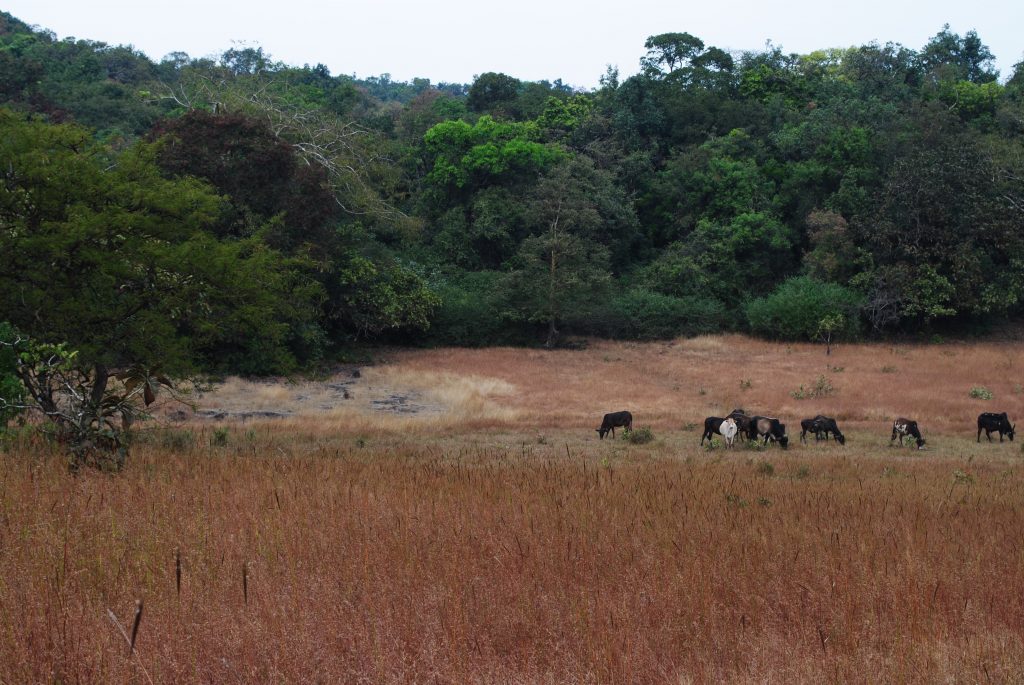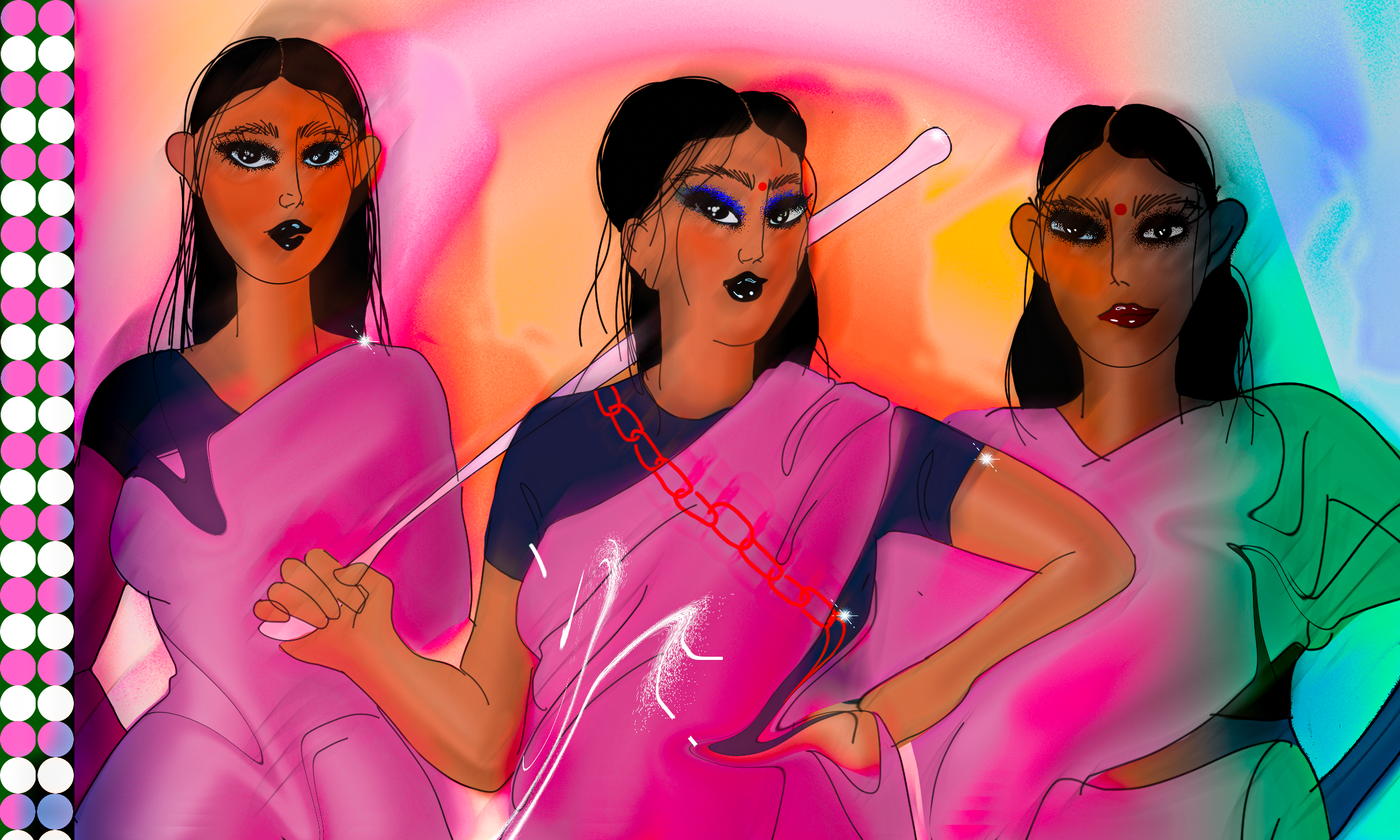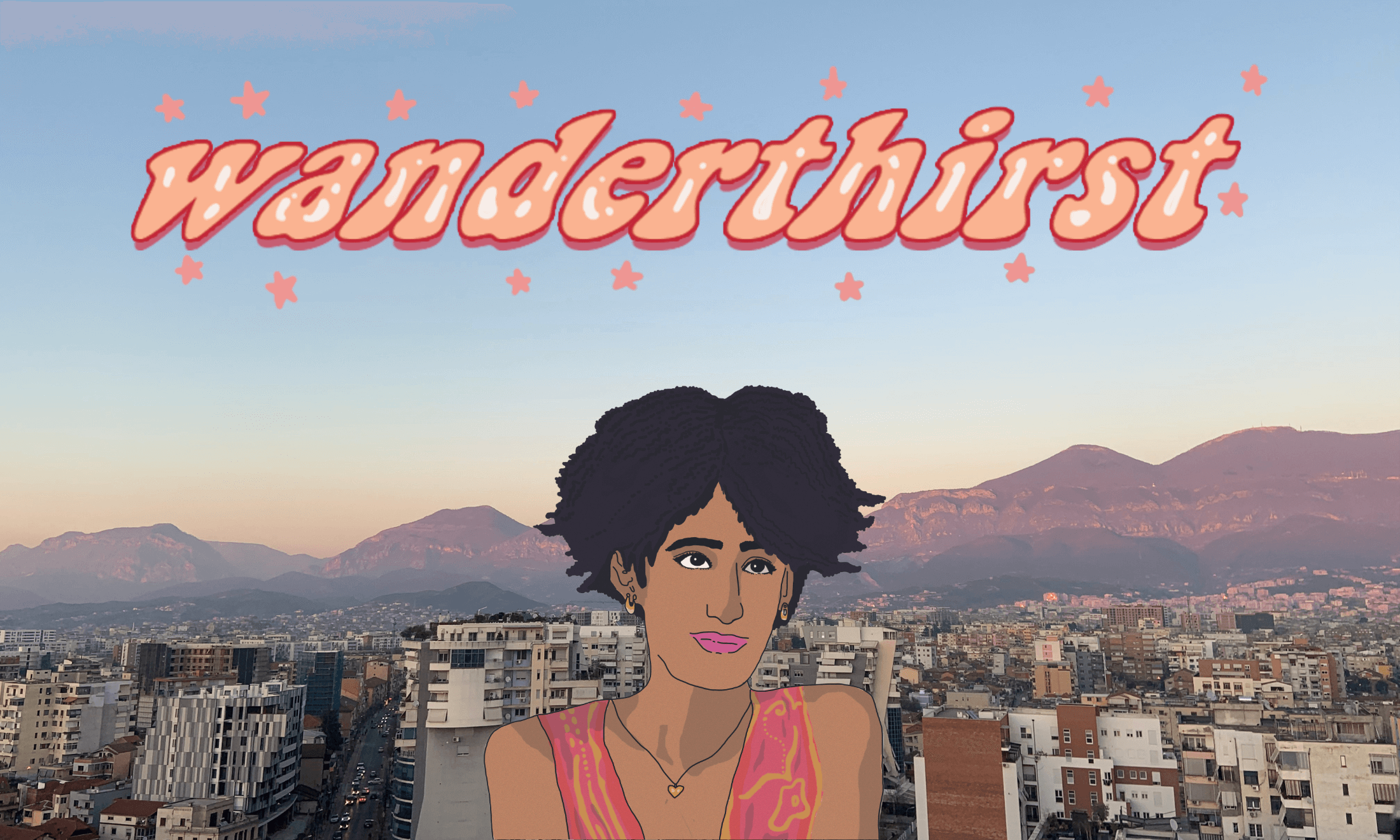
Illustration by serina.kitazono
When I travelled to Mumbai, I didn’t have a mobile phone. Instead of a blog, I wrote in a weather-beaten diary. There were no “spontaneous” moments captured on Instagram or posts on Facebook. I was an uncontactable 20-something on my first trip to India. It was the mid 1990’s and armed with a guidebook, a rucksack, a limited budget and an overwhelming sense of adventure I boarded a plane from Narita Airport ( I lived in Tokyo at the time) and flew into the sweltering heat of Bangkok. From there a plane whisked me to Nepal where I endured a bumpy bus ride to Varanasi. Two nights were spent in a simple room, yards from the River Ganges where hordes of worshippers submerged themselves into ink coloured water. The air was thick with the pungent smell of burning pyres.
The stares were relentless. My skin colour was the same as theirs but my features were different and I had afro hair. Children giggled behind their hands and pointed at the woman with dark skin who looked like them but wasn’t quite the same.
“My skin colour was the same as theirs but my features were different and I had afro hair”
The next day we took an overnight sleeper train to Mumbai’s iconic Chhatrapati Shivaji station. The journey took a day and a half and it encapsulated the countries eccentricity. The cries of “chai”, “chai” served in clay pots were purchased between station stops. Fellow passengers chatted with us and I noticed the subtle and not-so-subtle deference towards my partner’s white skin.

We arrived in Mumbai at dusk. The city bursts with a frenetic momentum similar to Tokyo but there’s an overwhelming sense of movement in Mumbai. The city is like an opened jar and all its contents spill out in a flurry. The result is an assault on the senses quite like no other.
Mumbai is best appreciated on foot. Walking allows time to explore the cities labyrinth of streets and crumbling intricate Victorian architecture. It’s not a city for the fainthearted. The incessant horn of the auto rickshaw coupled with the plight of some of the cities inhabitants can be hard going. After trekking around the harbour and iconic Gateway of India the call of refreshment and sanctuary led us to place recommended by an Indian friend. It had air con, decent beer but our experience there wasn’t a good one.
“I’m from Luton with a Jamaican mother and a Nigerian father. I’d never visited Africa. I continued to stride ahead. The doorman stopped me. ‘No, Africans'”
The exterior of the building had a neon light and its name emblazoned above. Rather surprisingly, it also had a bouncer at the door. My boyfriend walked in ahead to be greeted by the now familiar “welcome, welcome sir,” I followed but my path was blocked. “No, Africans”, the bouncer said. I’m from Luton with a Jamaican mother and a Nigerian father. I’d never visited Africa. I continued to stride ahead. The doorman stopped me. “No, Africans,” he said but this time there was a firmness and a bubbling undercurrent of menace. We argued with him and asked to see the management. He ignored us and ushered in a German couple. We walked away. Our appetite for a drink diminished.

We left Mumbai the next day and spent two weeks in the south of India. Our favourite hideaway was Arambol, a sleepy place completely at ease with itself. Days were spent lazing in hammocks. We read, swam and enjoyed deserted beaches without resorts or sun loungers. But, the incident in Mumbai hung over my travels. It left a mark and like a stubborn stain, it refused to go away.
It took another 20 years before I visited India again. The travel companion of my first visit is now my husband. There’s a laptop, a Twitter account and, I have a preference for slightly more upmarket sleeping options. We stay in Mumbai’s first luxury and newly opened boutique hotel. Abode Hotel has all the interior tick boxes. Muted farrow and ball painted rooms, teak furniture and walk-in rain showers. The hotel is in Coloba. It’s an area of the city we know from our previous visit and it still retains a faded charm. Pockets of the city are being developed but the unique feel of India remains. The National Gallery of Modern Art is a good place to while away a few hours as is a daytime drink in the Taj. Its overpriced (so make it last) but worth it for a quick snoop inside the hotel.
“We stay in Mumbai’s first luxury and newly opened boutique hotel. Abode Hotel has all the interior tick boxes”
Choor Baazar, a popular market for antiques and vintage is a must see. Be prepared to bargain hard. It’s in the south of the city so quite a distance if you are staying centrally but it’s worth the journey for streets filled with wonderful treasures, spices, oils, and trinkets. Mumbai has a frenetic atmosphere at night. There are a plethora of restaurants and we headed to one famed for its seafood.
We left Mumbai and caught a six-hour train to Goa sipping chai out of plastic cups. Goa has reinvented itself. Aramabol is unrecognisable from the place we visited in the 1990’s. Arambol has upped its game and embraced mass tourism. There are swanky clubs, and restaurants offering fine dining and tasting menus. At Matsya Freestyle Kitchen in Pernam, we have a memorable seven-course meal for around £20. There’s less debauchery but Goa just about retains its infamous live and let live attitude.

I met an African-American yoga teacher in Arambol. She’s visited India every year for the last 30 years or so. We both agree that India is a complex destination to visit as black women but, even with the challenges somehow the country seeps into your soul and dares you to return.
Useful Information:
You’ll need to update your vaccinations. Talk to your GP about travel to India.
Just like anywhere, scams happen. Be wary of taxi drivers around train and bus stations. They sense your travel weariness and may persuade you to take an ‘excursion’ around the city.
Dress appropriately, a shawl is handy and useful if visiting temples or religious sites.
On trains book the best cabin you can afford. And, carry toilet paper.
Be prepared for a country of contrasts. Wealth and extreme poverty live cheek by jowl.
Highlights:
Goa is a must see If you want a quieter experience head south of Arambol to Ashwem. It’s a gem.
Visit Mumbai – take a snap of the iconic Ambassador cars. The once ubiquitous vehicle is now a rarity on India roads.









